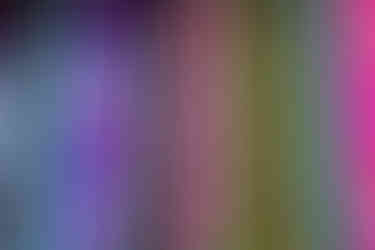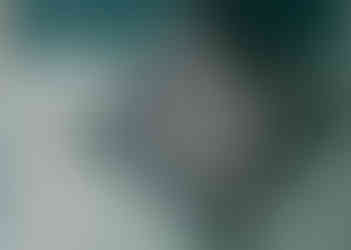Behind the Scenes
- Sew, Jahit

- Oct 7, 2019
- 4 min read
Updated: Jan 16, 2024
Sew, Jahit's approach on the social media, and what goes on behind the scenes.

They say don’t believe everything you see on the internet, especially the social media. By now, most of us would have realised that those flawless images of perfect everything in our Instagram and Facebook feeds are not necessarily accurate representation of the reality.
A stunning photo of a dream sewing studio. Click image for source.
Although, that doesn’t mean we have stopped looking at them. Far from it, in fact. Image-centric social media presence continues to grow as technology develops to provide more ease, freedom and room for creativity to social media users (at certain expenses, but that’s another discussion). Users’ expectations on the social media have also evolved such that we no longer just want to see real things captured in clear images, but also real things presented creatively and sometimes, even fantastically (filters, filters everywhere!). This is why social media celebrities continue to flourish even though everyone knows their subjects were heavily decorated, settings unrealistically propped, and images extensively processed. It’s what we want to see - and we want to see them quickly and abundantly!
What does this mean to content creators on social media? We have seen the extent to which some go to achieve the perfect shots. We have seen hilarious behind-the-scenes with ever supportive photographer friends and spouses. My mobile phone, for one, sometimes contained tens of photos of the same subject because I wanted the perfect shot for my website.
Some common images found on social media.
Sourced from Pexels.com: Holding Hands. Cliff. Coffee & Book.
While we still have a lot of growing up to do on social media, we seem to have reached some maturity where we can open-mindedly enjoy nice images online knowing full well they may have been manipulated, and content creators are beginning to open up on their “fakery” tactics knowing that their audience has begun accepting them as the norm. Basically, the social media have become more honest and upfront about their own "fakery" and delusions. What a time to be alive!
Having said that, I actually started the Sew, Jahit website and social network accounts not only because I wanted to share my sewing adventures with readers. The website is primarily a journal for me to descriptively and visually record the various aspects of my hobby. I had hoped that making it public would push me to create better-presented contents, while receiving feedback from readers to help me improve. Being such an amateur sewer, photographer and writer, and with no web design experience, it has been a challenge to come up with relevant and presentable contents. But we are lucky we live in a time where technology has simplified so many things and knowledge is abundantly available at our finger tips - factors which have benefited me significantly.
So, in the spirit of being honest and upfront about the "fakery" and delusion of the social media, here are the some “fakery” tactics used in the Sew, Jahit website:
Fakery 1. See those close-up photos of stitches? I tend to focus where the stitches are the neatest. Because who wants to see unruly stitches?

Fakery 2. My articles may seem to suggest that I had breezed through the projects. I did not. There were plenty of hesitations, mistakes and dejection. In many cases, a seam ripper was involved.

Fakery 3. I am not the most diligent sewer. I take a lot of short cuts where it won’t be obvious on the outside, like not finishing raw edges properly and ignoring bad stitches. I am working on improving this as my skill level increases.

Fakery 4. Almost all photos were subject to basic colour and lighting adjustments using some form of basic photo editor. The original lighting is not as bright and airy as it seemed (except the outdoor shots – those were natural. Nobody can deny the beauty of daylight).
Fakery 5. Not exactly an image manipulation, but almost all photos were cropped to improve composition.
Fakery 6. So far, I have edited two photos to remove unrelated items (household items) from image background (painstakingly, might I add, with Microsoft Paint, because I am a zero in Photoshop). They were either because of space constraints when taking the photo or I wasn’t the one who took the photo.
Fakery 7. Some seemingly random prop arrangements were actually not so random.

Fakery 8. You may have seen a few photos of my home’s interior. It is never that kempt outside a photoshoot.

Fakery 9. My written English is not the same as my spoken English. The way these articles are written, is not my natural fluency of spoken English. In real life, I speak the Manglish.
I’ll add as I think of more.
I have to say, though, the online sewing communities (both in my region and globally) that I have encountered so far have been very nice and friendly. They give the most encouraging comments and support to each other, regardless of skill level. Personally, I find myself learning more than just sewing skills by following some of these prominent sewing figures on the social media and joining these sewing communities in Facebook. There are quite a few, and they differ in character and style. Naturally, I follow the ones with which I resonate best or are most relevant to me from time to time. Currently, these are some of them:
YouTube Channels:
Just Get It Done Quilts by Karen Brown
Sew Very Easy by Laura Coia
Facebook Groups:
Sewing and Crafts for Slow Living by Rin of Sew In Love
Free Sewing Patterns by Craft Gossip
Geng Suka Menjahit (A group for Malaysia Sewers)
Sometimes, I feel like I can’t catch up with the social media trends and technology in general. Maybe it’s the added life’s commitments, or maybe it’s aging. Nonetheless, I am curious to find out what the future holds and how it will impact this age-old craft of sewing. Who knows, twenty years on, my son (say he inherits the hobby) could be showing off to me his sewing robot, like I did to my grandmother (who used to sew when I was a child) with my computerised sewing machine!


























Comments